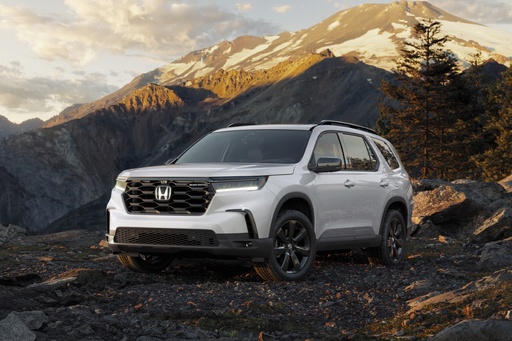
The 2025 models of the Ford Explorer and Honda Pilot are prominent choices in the midsize SUV category, both offering three rows of seating, available all-wheel drive, and numerous storage options throughout their interiors. These features make them practical options for errands, commutes, and long journeys. However, which of these SUVs offers better value?
The current version of the Explorer has seen significant improvements compared to previous offerings. Ford has updated its styling, revamped the interior, and introduced several new technological enhancements. On the other hand, the Pilot made a full redesign in 2023, and while it doesn’t see many updates for 2025, it remains a strong contender within its class. In order to help potential buyers make an informed choice, a comparison has been conducted between these two popular SUVs.
**Engines and Fuel Efficiency**
The Explorer comes standard with a turbocharged four-cylinder engine delivering 300 horsepower. When configured for rear-wheel drive, it achieves an estimated fuel economy of 24 mpg combined. When all-wheel drive is added, this rating slightly decreases to 23 mpg.
Though a four-cylinder might initially appear insufficient for a larger SUV, the Explorer’s performance proves otherwise, providing impressive acceleration when merging onto highways or transporting a full family. In fact, testing shows that the Explorer can reach 60 mph from a standstill in 7 seconds. Additionally, a more powerful turbocharged V6 engine option generating 400 horsepower is available, reducing the 0-60 time to a mere 5.6 seconds.
In contrast, the Pilot is powered by a V6 engine producing 285 horsepower, which can be equipped with either front- or all-wheel drive; however, there are no alternatives for a more potent engine. During testing, the Pilot lagged behind the Explorer, taking 7.8 seconds to accelerate to 60 mph. It achieves a maximum estimated fuel economy of 22 mpg combined, making it less efficient than the Explorer as well.
**Winner: Ford Explorer**
**Interior and Technology**
Both the Explorer and the Pilot feature roomy and comfortable front seats, offering options for heating and ventilation. However, the second and third-row accommodations are notably less impressive.
The Explorer’s available captain’s chairs have received criticism for being somewhat narrow and lacking cushioning. The third row also suffers from insufficient legroom for adult passengers. The Pilot faces similar issues, although its second row is more spacious; the back row remains best suited for children.
Where the Explorer excels is in its technology offerings. It boasts an impressive digital instrument cluster and a sizeable 13.2-inch center touchscreen, far surpassing the Pilot’s configurations. Moreover, the Ford model includes the BlueCruise feature, designed for hands-free driving on highways.
**Winner: Explorer**
**Driving Experience and Comfort**
The Explorer also garners praise for its responsive handling, which contributes to a sporty driving experience. It feels stable and agile when navigating turns. Conversely, while Honda vehicles typically emphasize a similar driving feel, the latest Pilot seems less engaging. It provides a straightforward driving experience but lacks excitement compared to the Explorer.
Nevertheless, the Pilot offers a more refined ride quality, absorbing bumps more effectively. The Explorer tends to transmit road imperfections, making it less pleasant over rough terrain. For off-road adventures, the Pilot’s TrailSport trim performs admirably, making it a better option for outdoor activities.
**Winner: Pilot**
**Utility and Storage Options**
The Pilot is praised for its well-designed cabin, featuring numerous storage compartments, making it practical for all passengers. A generous center console is located in the front, with various storage nooks and cupholders available for second- and third-row passengers. Honda states that the Pilot offers 48.5 cubic feet of cargo space behind the second-row seating.
Although the Explorer also provides several storage options, including convenient underfloor storage in the cargo area, it falls short compared to the Pilot. The cargo capacity behind the Explorer’s second row measures 46 cubic feet.
**Winner: Pilot**
**Pricing and Value**
The 2025 Honda Pilot starts at $41,650 for the base Sport trim, which includes features such as heated front seats, three-zone automatic climate control, and advanced driver assistance technologies like adaptive cruise control and blind-spot monitoring. The base Active trim of the Explorer starts at a lower price of $41,350, offering similar features.
When exploring higher-trim models equipped with features like panoramic roofs and advanced sound systems, both SUVs maintain a comparable pricing structure. The Pilot’s top-tier Black Edition comes in at $56,030, while the Explorer’s Platinum trim is priced at $55,855.
**Winner: Tie**
In conclusion, the evaluation highlights a slight advantage for the Explorer within the midsize SUV landscape. However, individual preferences may sway your decision. The Explorer stands out for its sportier driving experience and advanced technology, while the Pilot proves to be more comfortable for everyday use.

